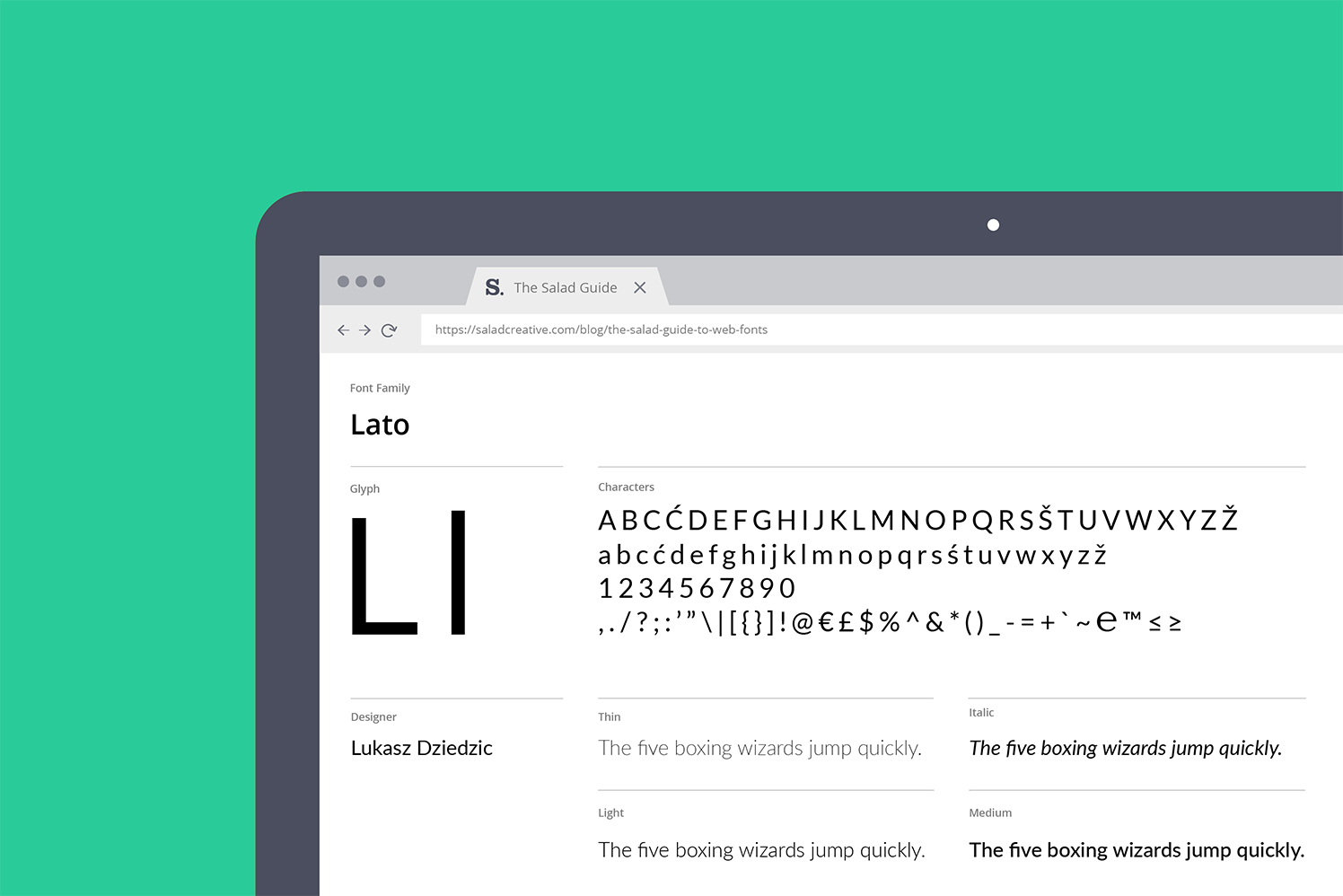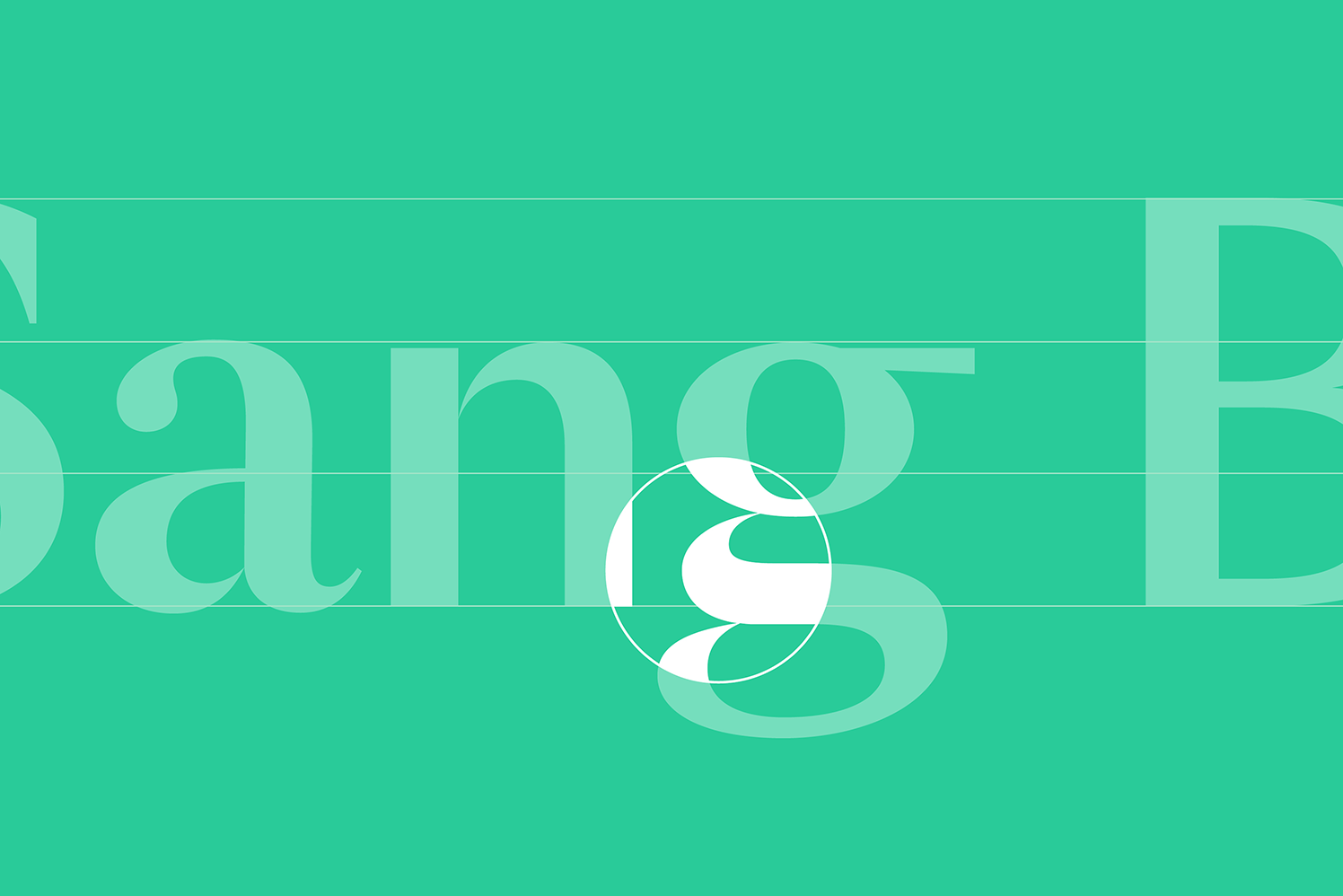A guide to fonts and licenses
Typography is an art, purposed with arranging type to make written language legible and appealing for its readers.

In a commercial capacity, working with typography on behalf of clients is an important part of creating and defining each unique brand identity – and a core element of typography is the selection of fonts. Traditionally ‘font’ is the name given to a specific styles of text characters such as one in Salad’s suite – Graphik. But these days ‘font’ is also used to refer to typefaces or typeface families. There are thousands of fonts available to choose from and making your choices should be done with particular consideration – a topic for another day, perhaps.
Today, I wanted to shed some light on the reasons why some fonts are free to use while others have a price tag. I’ll also explain why and when different licences are needed and why some fonts cannot be used in certain situations (to help keep you out of trouble!).
What are desktop fonts?
Desktop fonts are installed onto your computer for use within digital applications and there are two types – system fonts and licensed desktop fonts. System fonts are pre-installed on your PC or Mac. They are free to use and have an open licence which entitles you to create, print and distribute a document that uses them (although you can’t distribute the font itself).
System fonts are also universally recognised which means that you can share or email your documents to any other computer and it will appear as intended. Having said that, system fonts installed on a Mac do differ very slightly from those on a PC. System fonts can also be incorporated into website designs. For maximum compatibility, people tend to limit the number of system fonts to a relatively static selection. As a result, these fonts are widely used within home and business environments which means they lack any ‘uniqueness’ or ownability.
System fonts are:
- Free
- Universally recognised
- Suitable for use within websites
- Limited in selection
Licenced desktop fonts are created by independent font foundries and can be acquired for installation on either a PC or Mac. Sometimes these can be used for free but usually there will be a charge from the font foundry to licence it. The cost of the licence will vary from foundry to foundry and it will also depend on how the font will be used, for example if it’s for personal or commercial use and how many computers or users need the font.
The number of licensed fonts is unlimited so there’s a huge selection to choose from. For an individual or business looking for something distinctive or modern, licenced fonts usually offer a wide range of options. Because you have to pay for the majority of these fonts, they tend to be less commonly used than system fonts and therefore have more of an impact.
The only potential drawback of licenced fonts, aside from the cost, is the reduced compatibility; a digital document using a licenced font can only be viewed and edited on a computer with the same font installed. The document can still be shared and printed with computers that don’t have the font installed as a flat, non-editable piece of artwork but this prevents changes being made and it will increase the file size of a document.
Licenced desktop fonts are:
- Available in a large selection
- Free sometimes, but most will incur a charge
- Not suitable for website use
- Not easy to share in an editable format
What are web fonts?
Web fonts are specifically designed and optimised by font foundries to be used online. Usually starting out as an evolution of an existing desktop font, these fonts are slightly modified to increase readability and performance within web browsers across devices.
Unlike desktop fonts that need to be installed on a computer before they can be used and viewed, web fonts are stored online. Because of this, they can be viewed correctly within a website regardless of which computer it’s being accessed from. In the early days of the internet, designers only had a small selection of web-safe fonts to use which limited their ability to produce unusual or distinctive designs.
Today, the number of web fonts available is vast which gives us much more creative freedom. Hurrah! Some web fonts are free to use and some require a licence for use. The cost of the licence depends on the foundry and may also depend on the number of website page views per day/month. Some foundries ask for a one off payment whereas others offer a subscription service. It varies.
Web fonts are:
- Available in a large selection
- Free sometimes, but most will incur a charge
- Stored online
- Not used within desktop computer software for sharing or printing

How are fonts used to design?
One of the many valuable purposes of a brand identity is to help a business to distinguish itself from fierce competition. We do this by creating an appropriate visual ‘personality’ through a variety of design elements.
One of those elements is the font or font suite that we use to display text or communicate important messages from the brand. It’s important that these fonts are used consistently and that often requires a mixture of all the different formats I’ve mentioned above. A carefully selected licenced desktop font will convey appropriate brand characteristics and the associated cost will help maintain differentiation by ensuring that it doesn’t become overused by the general public.
The font should help to create a consistent brand image across all assets but especially those that are public-facing. In most cases, this will include a website and the business will need to source the equivalent webfont licence. Many font foundries provide licenses for both desktop and web versions of their fonts so you can retain brand consistency across print and online (and sometimes save money by buying both together). In large corporations, it’s not always feasible for every computer to have the licensed desktop font installed.
Instead, we would recommend an alternative system font to retain some consistency across internal documents, even if they won’t ever be shared with the public. This alternative will also need to be used for email communications which is limited to system fonts only. These choices or rules can be detailed in brand guidelines so that the brand identity can be consistent and maintained in the future, no matter who is creating your brand assets. But if you’re still unsure about what fonts you should use and which licences you need, get in touch and we’ll guide you through these tricky waters.
Bourne House
2 New Road
Durrington
Salisbury
Wiltshire
SP4 8EL





